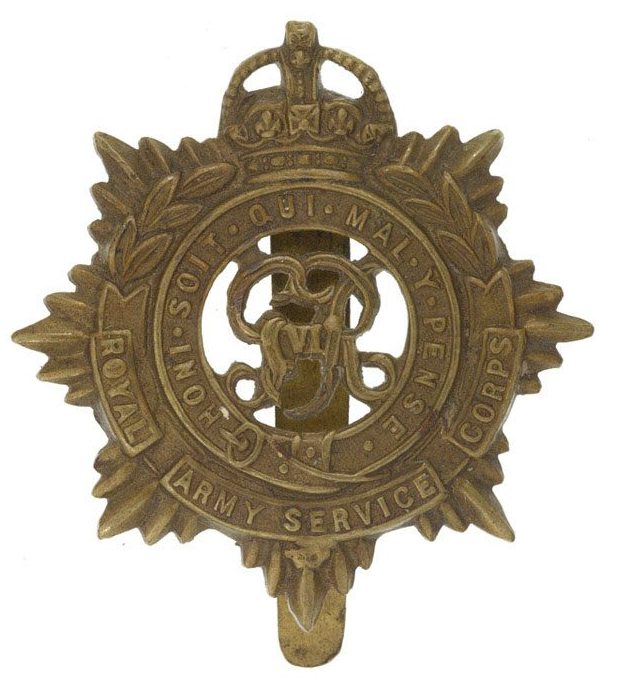Personal Details
Born: 1882 and baptised 29 June 1883.
Family: Eldest of seven children born to Alfred and Joanna Eaton. He married Lizzie Furber in 1913 in Whitchurch and together they had four children, Ellaline, Winifred, Bernard and Leonard.
Residence: In 1883 the family were living at Broughall, near Whitchurch. By the time of the 1891 census the family had moved to another outlying area of the town, Black Park. In 1901 William was living in at Moss Farm, Black Park. Ten years later he was back with his parents and siblings at 14 Castle Hill, Whitchurch. In 1933 he was residing with his wife and family at 9 Talbot Crescent, Whitchurch.
Employment: At age 18 William was working as a waggoner on a farm. Ten years later he was assisting his father in his carrier business and listed as a carter.
Died: In 1933 and buried in Whitchurch cemetery on 15 April the same year.
Military Details
Regiment: Royal Army Service Corps
Rank: Private
Service Number: M2/181543
Date of Enlistment: Not known
Date of Discharge: Not known
Reason for Discharge: Not known
William was awarded the Campaign Medals (British War Medal and Victory Medal)

The British War Medal (also known as 'Squeak') was a silver or bronze medal awarded to officers and men of the British and Imperial Forces who either entered a theatre of war or entered service overseas between 5th August 1914 and 11th November 1918 inclusive. This was later extended to services in Russia, Siberia and some other areas in 1919 and 1920. Approximately 6.5 million British War Medals were issued. Approximately 6.4 million of these were the silver versions of this medal. Around 110,000 of a bronze version were issued mainly to Chinese, Maltese and Indian Labour Corps. The front (obv or obverse) of the medal depicts the head of George V. The recipient's service number, rank, name and unit was impressed on the rim.
The Allied Victory Medal (also known as 'Wilfred') was issued by each of the allies. It was decided that each of the allies should each issue their own bronze victory medal with a similar design, similar equivalent wording and identical ribbon. The British medal was designed by W. McMillan. The front depicts a winged classical figure representing victory. Approximately 5.7 million victory medals were issued. Interestingly, eligibility for this medal was more restrictive and not everyone who received the British War Medal ('Squeak') also received the Victory Medal ('Wilfred'). However, in general, all recipients of 'Wilfred' also received 'Squeak' and all recipients of The 1914 Star or The 1914/1915 Star (also known as 'Pip') also received both 'Squeak' and 'Wilfred'. The recipient's service number, rank, name and unit was impressed on the rim.

